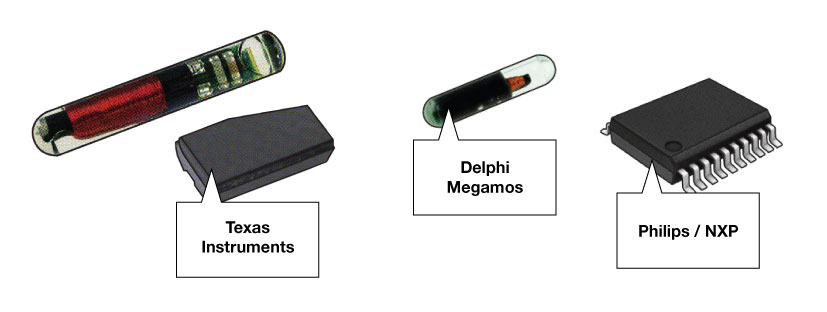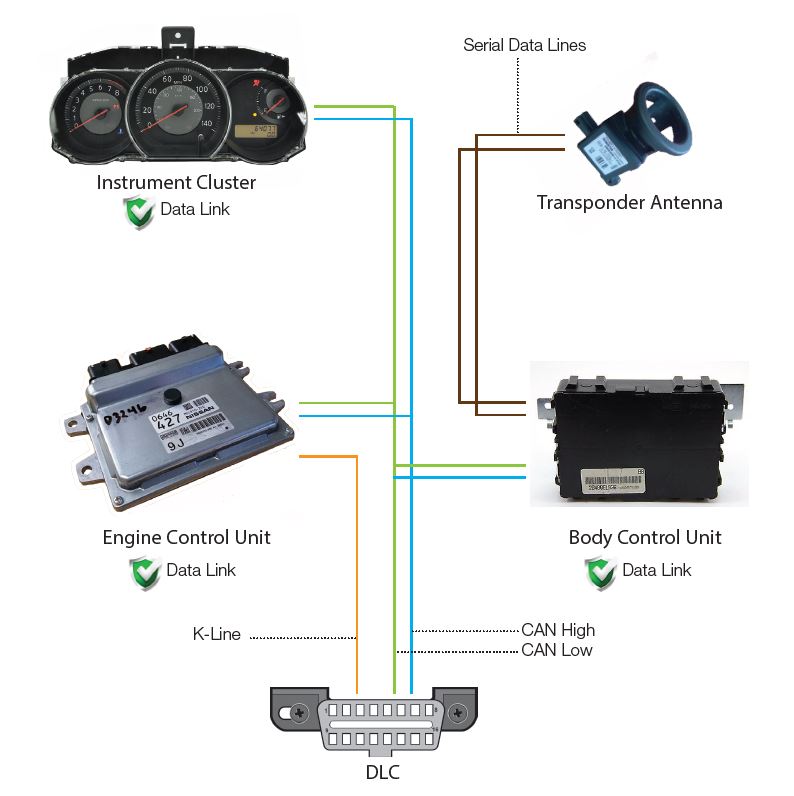
Customers wishing to register an expression of interest can do from the product page webpage or asking one of our friendly sales team to do so on your behalf.
| Fee* |
Duration |
Location/s |
|
$595 +GST
|
1 Day
|
Upcoming Dates: Thursday 29th & Friday 30th May 2025 (8.30am - 4pm)
Location: LSC distribution & training centre Brooklyn, Melbourne.
Apply to the course HERE
|
TRANSPONDERS & DIAGNOSTIC KEY PROGRAMMING
You must read and agree to our terms and conditions / cancellation and refund policies to be eligible to apply for a place in a LSC TechEd program.
Course description
Introduction
Transponder keys are now a standardised component of a vehicle computer system and are becoming increasingly sophisticated as the years progress. Our industry knowledge coincides with this trend in the ever-going on game of catch up to find viable aftermarket solutions. In the Australian automotive market we find a vast diversity of vehicle manufacturer models driving on our roads, each featuring their own procedures or methods for diagnostic programming. The significant variety dictates that it's not possible to train a user of about every model imaginable, there will always be an element of the unknown that needs to be overcome. The best way to learn about automotive transponders and diagnostic programming is to explain what actually happens inside the vehicle and how the transponders actually interact with the immobiliser. This knowledge can be applied across the board while dealing with uncertain situations and troubleshooting.
Purpose of the learning program
This course has been designed to allow for maximum participation in theory and practical exercises. You will work with custom made, fully operable diagnostic simulators which allow the users to visually see each of the different components which make up a security system in the example vehicles. Each exercise will cover a variety of important processes and solutions ranging from transponder selection and manipulation to diagnostic communication for key programming.
PREREQUISITES
- There are no mandatory requirements
- Prior understanding of transponder identifications or key cloning may be helpful.
- Prior experience of diagnostic key programming may be helpful
Topics
There are two primary topics which are interlaced together:
Transponders
Focuses on transponder theory and explains vital information which should be known by all participants who practice diagnostic key programming. The skill of being able to accurately identify transponders is paramount and is the first check point during a troubleshooting procedure. LSC tech support estimates that 75% of programming problems relate to incorrectly configured transponders and incorrect keys.
- What are Transponders? – Comprehensive overview of what a transponder’s actually are and how they work.
- Authentication – How the different types of transponder authenticate and types of encryption.
- Crypto Transponder Overview – Detailed discussion and practical applications of the three main crypto transponder manufacturers (Texas Instruments, Phillips NXP, Megamos) and associated types including the latest and greatest technology used today.
- Image Generation – Create image generated or “Pre coded” transponders using a variety of tools for use with diagnostic key programming.
- Cloning – Current solutions revolving around cloning transponders, benefits and limitations.

Transponder identifications focused in the content include ID numbers: 60-72, 46, 48 and related sub identifications.
Diagnostic key programming
Diagnostic key programming focusing on a variety of scan tools. Learning how a vehicle and its immobiliser system components are composed promotes easier scan tool navigation. Understanding relevant ECU configurations is important while diagnosing potential issues or failures during diagnostic key programming or identifying faults.
- On-Board Diagnostics – What exactly is OBD? And why is it important.
- Network Communication – How components within a vehicle security network communicate.
- ECU Components - Learn about the different types of electronic control units that make up a complete security network in a vehicle.
- Immobiliser Configurations - How the immobiliser “chain” is comprised including data links and internal security features.
- Programming Keys – What actually happens when you program keys by diagnostics?
- Key Variants – Overview on all current types of key systems including slot and proximity keys.
- Security Access – Overview of the many layers of security such as in pin codes and timed access.
- Hints, Tips and Troubleshooting – Helpful information to troubleshoot and resolve potential issues.

ECU networks which contain all relevant components to the immobiliser system are explored
TOOLS COVERED
While Smart Pro will be the main tool used, this training does not focus on any one specific diagnostic tool, we are willing to discuss any relevant tool in our market. There is a welcome opportunity for participants to bring their own equipment for use during the training (please inform us if you wish to do so), however we condemn the use or promotion of counterfeit or cloned variants
Below are the vehicle simulators that are on hand, these give a comprehensive range of the different types of communication systems, transponder types, security access and various componentry to discus and demonstrate.
- Mazda 3 BL (2009 - 2013) BLADED ID6F-63
- Mitsubishi Magna TJ (2000 - 2005) BLADED ID46 PW/MA
- Mitsubishi Trition MQ/MR (2015 - 2021) BLADED ID46 CDP
- Holden Barina TK (2005 - 2011) BLADED ID48
- Holden Barina TM (2011 - 2018) BLADED ID46E
- Holden Commodore VE (2006 - 2013) BLADED ID46 Circle+
- Holden Rodeo RA (2003 - 2008) BLADED ID48
- Holden Captiva CG (2014 - 2018) PROXIMITY ID46E
- Toyota Corolla ZRE182 (2012 - 2018) BLADED ID7A H key
- Toyota Aurion GSV40R (2009 - 2011) PROXIMITY ID6E-98
- Nissan Tiida C11 (2006 - 2013) BLADED ID46 PW/MA
- Nissan Dualis J10 (2007 - 2013) TWIST PROX ID46
- Hyundai Santa FE (2013 - 2018) PROXIMITY ID46
- Hyundai i30 FD (2007 - 2012) BLADED ID46
- Hyundai i30 PD (2017 - 2021) PROXIMITY ID7A-XX
- Kia Sorrento UM (2015 - 2019) PROXIMITY ID49
- Great Wall V240 (2011 - 2014) BLADED ID48
- Mercedes C Class W209 (2000 - 2008) IR KEY

- Example 2013 Nissan Dualis "Twist" type intelli key system, complete working and programmable simulator for all key/prox and remote functions.

- Example 2011 Toyota Aurion proximity key system, complete working and programmable simulator for all key/prox and remote functions. Perfect for demonstrating the Tango Toyota Proximity emulation solution.
LEARNING OUTCOMES
Upon completion of the course you will have a greater understanding of vehicle immobiliser networks and their associated transponders, improved vehicle problem troubleshooting, and fluency of self-help resources. You will grow confidence in your assessment of incoming job inquires, for both viability and job pricing.